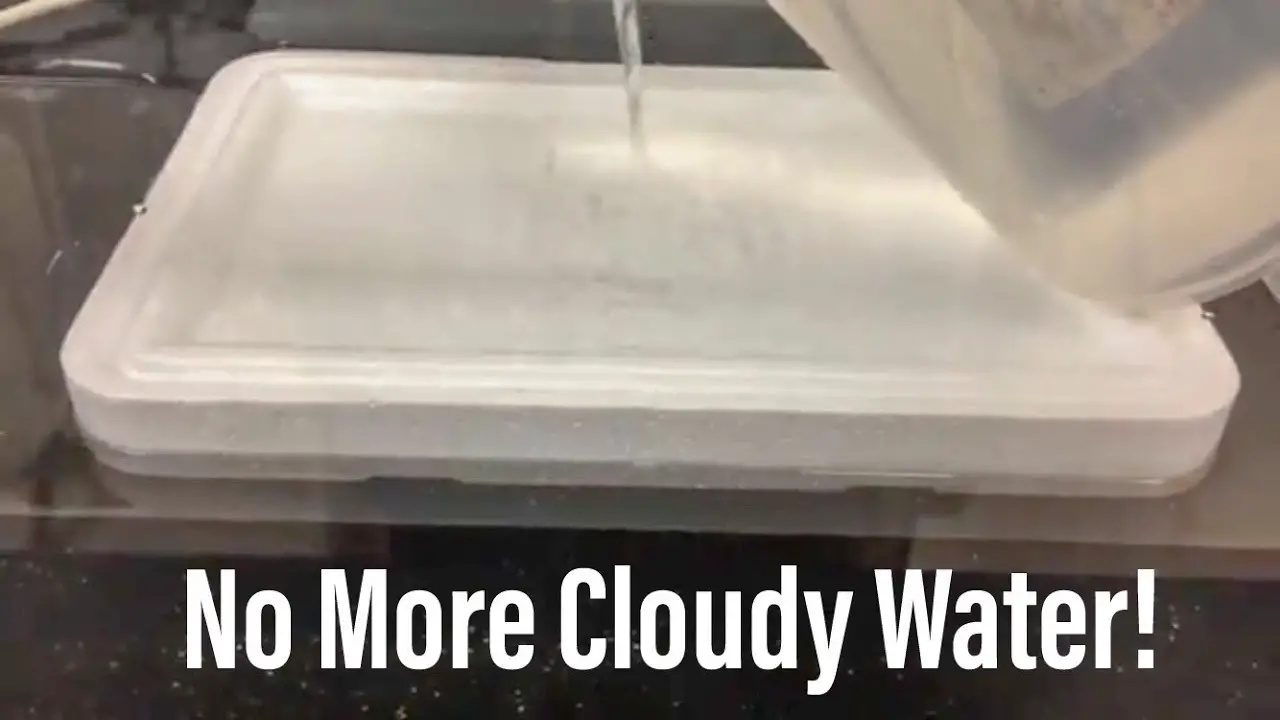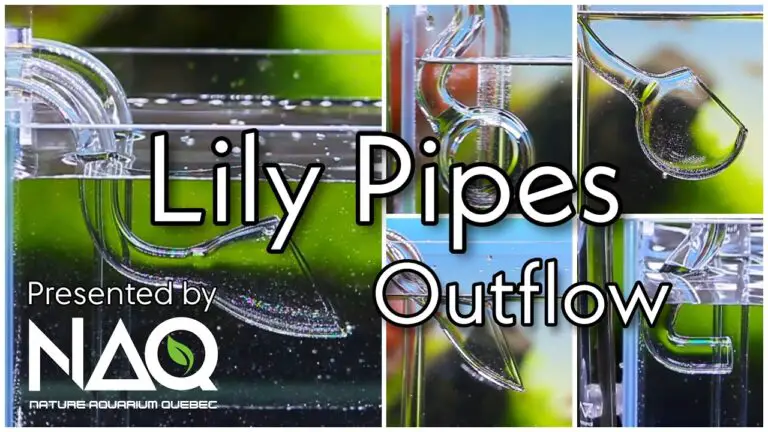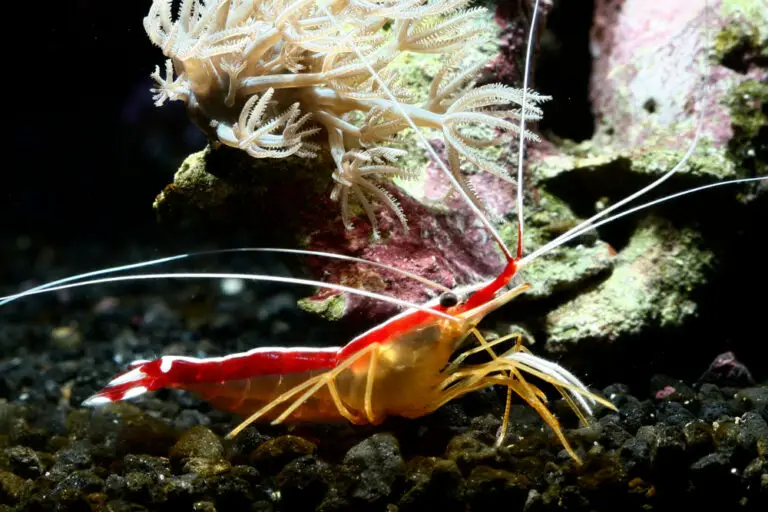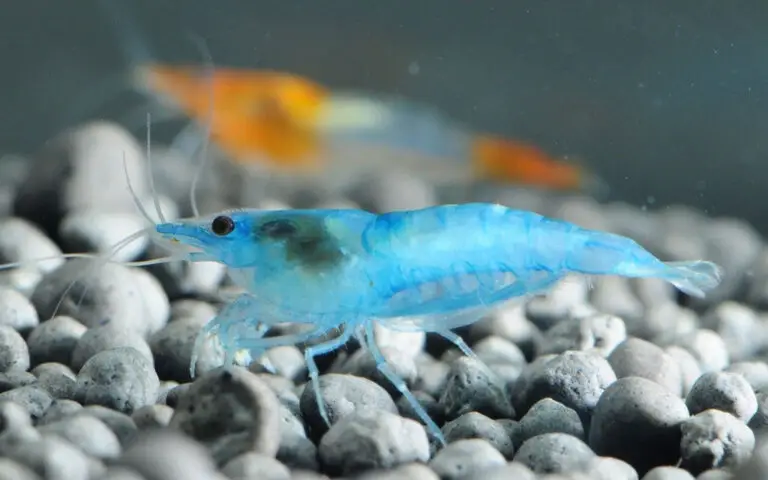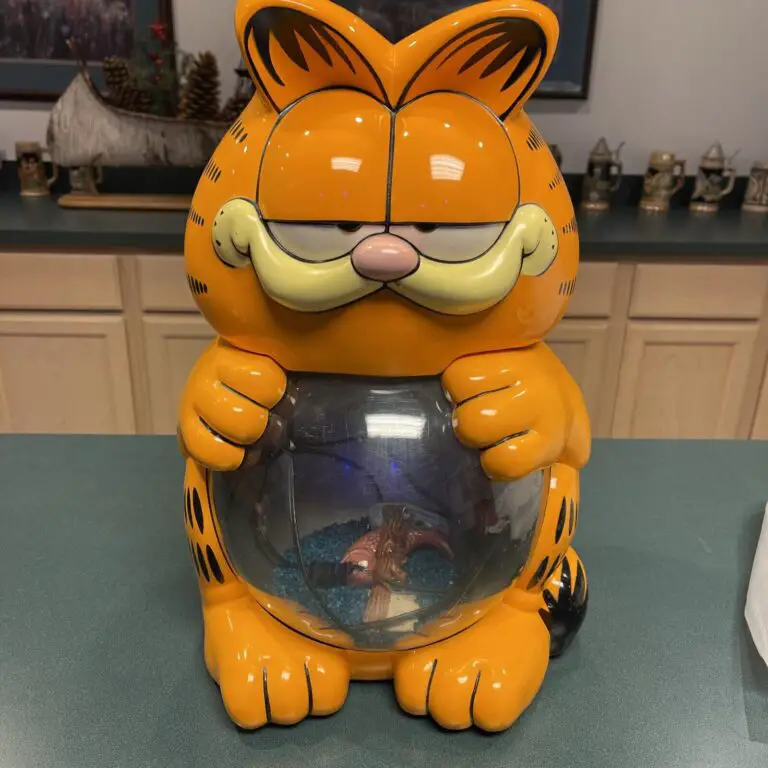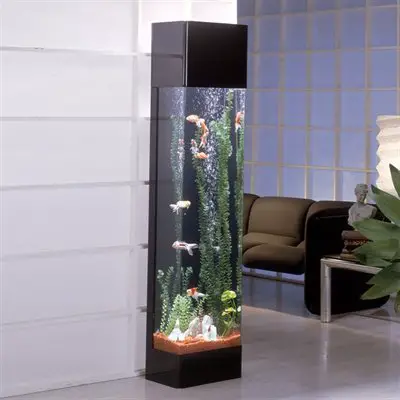How to Fill Aquarium Without Disturbing Substrate?
1. Start by filling a bucket with tap water and add an aquarium conditioner to it, according to the manufacturer’s instructions.
2. Place the bucket at the back of the aquarium where you want to add the new water and put a hose inside it that reaches down near the bottom of your tank.
3. Put one-third or half of your desired amount in before adding any substrate so you don’t disturb it too much when pouring in more water later on.
4. Slowly start filling up your tank until about two inches from reaching full capacity, then turn off your faucet and let all sediment settle for around 10 minutes before turning it back on again for another few minutes until you reach full capacity (check with a ruler).
5. Once done, use an aquarium siphon or turkey baster to suck up any debris floating around without disturbing substrate below; this will help keep everything clean after each fill-up session!
- Start Filling from Low Point: Begin to fill the aquarium from the lowest point, so that water can evenly disperse and not disturb the substrate.
- Fill Slowly: Fill slowly and in small increments, giving time for any displaced particles of substrate to settle back into place before introducing additional water. This will also help reduce cloudiness due to stirred up debris.
- Add Water Down Aquarium Wall: When filling around plants or decorations, try adding water down one side of the aquarium wall instead of directly over them, as this will reduce disturbances caused by a steady stream of falling water on top of them.
- Use Siphon Tube & Hose: To further prevent disturbance to the bottom material, use a siphon tube with an attached hose. To carefully add small amounts of fresh tapwater at your desired temperature. Directly onto specific areas you would like filled up first. Such as corners or deep sections where it is difficult for a low flow stream. From above to reach easily without stirring up too much debris in its path.
Aquarium Filling Hose
An aquarium filling hose is an essential tool for quickly and easily filling your fish tank. It attaches to the nearest water source and allows you to control the flow rate of water into your tank, helping prevent spills or overfilling. Many aquarium hoses come with a shut-off valve so you can stop the flow at any time, as well as a filter that helps keep debris from entering your tank while it’s being filled.
With this simple but important device, you can ensure that your fish have the best possible environment in which to thrive!
How to Fill a Fish Tank for the First Time?
Filling a fish tank for the first time can be an exciting but daunting process. Before adding water to your new aquarium, it is important to make sure all of your equipment is properly installed and functioning correctly. You will also need to add a dechlorinator and aqua-safe conditioner to the incoming water supply in order to remove any harmful chemicals or bacteria that may be present.
Once these steps are complete, you can begin filling your tank with clean water and allowing it to cycle before introducing any livestock or decorations into the tank.
How to Add Water to Fish Tank After Evaporation?
Adding water to the fish tank is essential when evaporation has occurred. Start out by filling a clean bucket with dechlorinated tap or spring water that has been treated for chlorine, chloramine and other chemicals. Use a thermometer to check the temperature of the new water and make sure it matches that of your existing tank before adding it in.
Slowly pour the new water into the top of your fish tank so as not to disturb any decorations or harm any aquatic life living there. Make sure you keep track of how much you’re adding; too much can cause problems with pH levels and oxygen content within the tank.
How to Fill an Aquarium?
Filling an aquarium with water for the first time can seem like a daunting task, but it doesn’t have to be! All you need is a hose or bucket and some tap water. Start by placing your aquarium on a flat surface and fill it up about halfway with room-temperature tap water.
Once filled, add any necessary treatments such as dechlorinators or pH adjusters before topping off the tank with more water. Finally, wait 24 hours for the chlorine in the tap water to dissipate before adding fish or plants to your new home!
How to Fill a Large Aquarium?
Filling a large aquarium can be a daunting task, but it’s important to take your time and do it correctly. First, make sure that the tank is properly secured on its stand before adding any water. Next, fill the tank slowly with treated tap or distilled water until it reaches two inches below the top of the aquarium.
You can add dechlorinator to help remove harmful compounds from the water if needed. Finally, once your tank is filled you can begin setting up decorations, rocks, substrate and introducing aquatic life!
Can You Add Water to Fish Tank With Fish in It?
Adding water to an aquarium with fish in it should be done slowly and carefully. It is important to use dechlorinated or conditioned water so that the pH balance of the tank does not change too quickly, which could harm the fish. Make sure to fill up only half a bucket at a time, pouring it along one side of the tank near the surface of the water.
This will help you avoid disturbing any gravel and decorations on the bottom, as well as minimize stress for your fish.
Python Water Changer
Python Water Changers are an efficient and easy-to-use solution for changing your aquarium water. These systems utilize a motorized pump to quickly and easily remove old, dirty water from your tank while simultaneously adding fresh, clean water in its place. The Python Water Changer is perfect for those who don’t have the time or energy to manually siphon their tank each week, as it can take care of the job in significantly less time with minimal effort on your part.
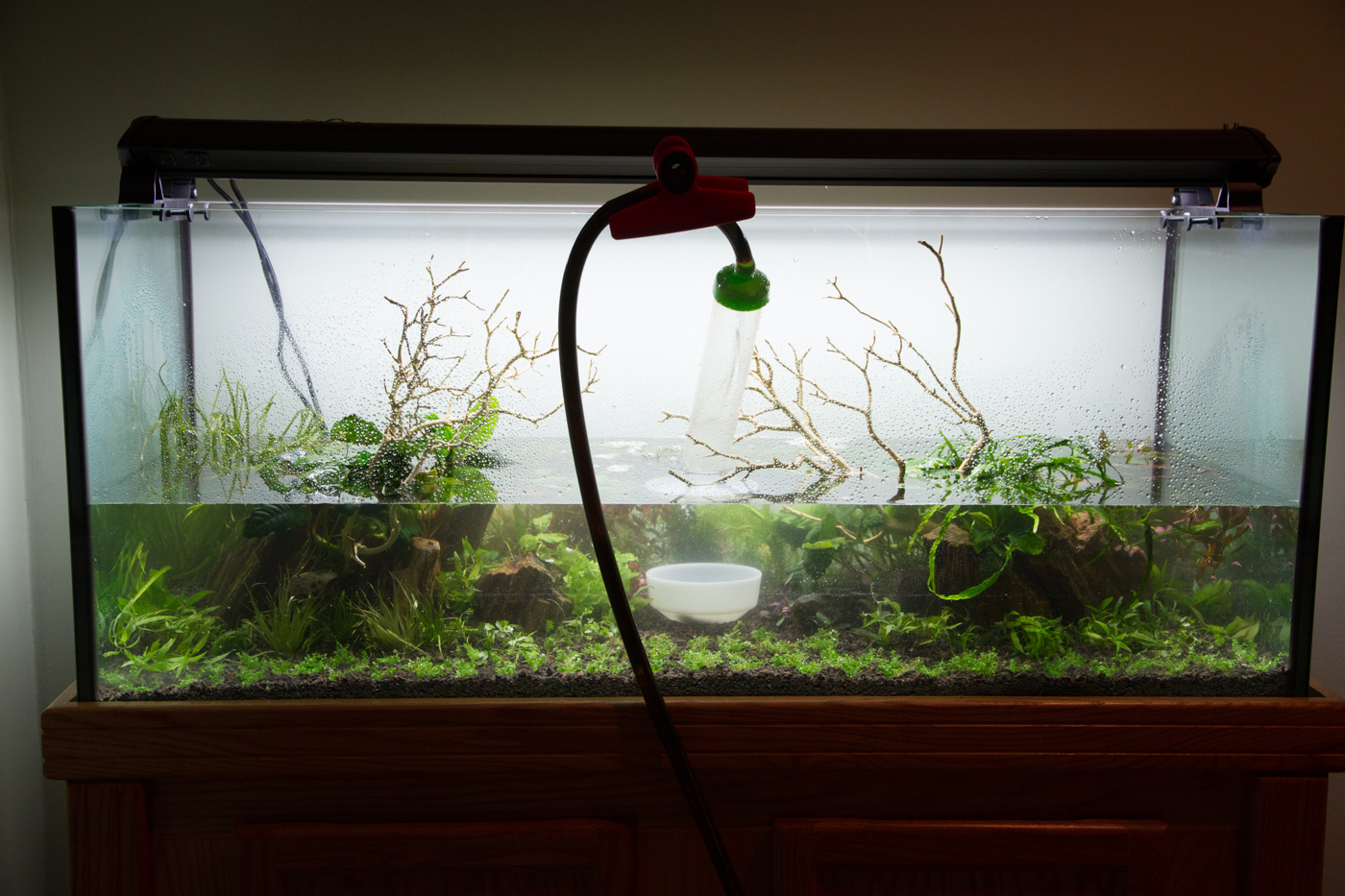
Credit: www.sunkengardens.net
How Do You Pour Water into a Tank Without Disturbing Substrate?
Pouring water into a tank without disturbing the substrate is not as difficult as it may seem. The key to success lies in having the right tools and taking the necessary time and care to complete the task properly.
First, you’ll need a container with a spout that can be submerged beneath the surface of your tank’s water level.
Next, use an aquarium siphon or hose attachment to slowly draw out some of the existing tank water. Once you have removed enough liquid so that there is room for new water at your desired level, begin using your pour device to slowly and steadily add fresh tap or dechlorinated bottled water until you reach your desired depth within 1-2 inches from the top of your tank. Be sure to carefully monitor both temperature and pH levels throughout this process and adjust accordingly if needed.
Taking these steps will help ensure that any disruption to gravel or other substrates remains minimal during your maintenance procedure!
What is the Easiest Way to Fill a Fish Tank?
Filling a fish tank with water is one of the most important steps in setting up an aquarium. The easiest way to fill a fish tank is by using a garden hose connected to your tap or faucet. Simply attach the hose to the tap and place the other end into the tank, allowing gravity to do all of the work for you.
If you are filling from multiple tanks, it is best practice to use separate hoses for each so that any debris present in one does not contaminate another. It’s also important to leave enough space at the top of your tank so that when adding decorations, gravel and substrate later on, there will still be room for them without overflowing!
How Do You Fill a Planted Aquarium Water?
A planted aquarium is a beautiful addition to any home and can be filled with an array of aquatic life. To fill your planted aquarium water, you should start by treating it with a dechlorinator to remove harmful chlorine from the tap water. You can then use a gravel vacuum or siphon to remove debris from the bottom of the tank before filling it up completely with treated tap water.
Make sure that you do not take out too much substrate as this will disturb any roots in the aquarium which could harm your plants. For best results, use an adjustable heater set between 78-82°F (25-28°C). Once all these steps are taken, make sure that you allow time for the temperature and pH levels of your tank to adjust before adding any fish or other living creatures into its waters!
Will Substrate Dust Hurt Fish?
Substrate dust can be dangerous to fish if not properly handled. Substrate dust, which is a fine powdery mix of small particles and minerals, can cause a variety of respiratory problems for fish when inhaled. If substrate dust is stirred up in the aquarium due to vacuuming or other means, it will enter the water column and float around in suspension where it can easily be inhaled by fish.
When this occurs, the tiny particles become lodged in gills and interfere with breathing leading to suffocation. Additionally, some types of substrate contain sharp edges that may scratch delicate membranes inside a fishes’ mouth or gills causing further irritation that could lead to infection or disease. To prevent these issues from occurring it is important to always vacuum your tank slowly so as not to stir up too much debris at once; additionally use filters designed specifically for removing small particulate matter like sponge filters rather than standard hang-on-the-back models which are more likely to blow debris into your tank’s waters.
How To Fill A Tank Fast Without Disturbing The Substrate?
Conclusion
In conclusion, filling an aquarium without disturbing the substrate can be a tricky process. However, by following these steps, you will have a successful tank setup with minimal disturbance to your bottom layer. It may take some practice and patience but it is definitely worth it in the end!
